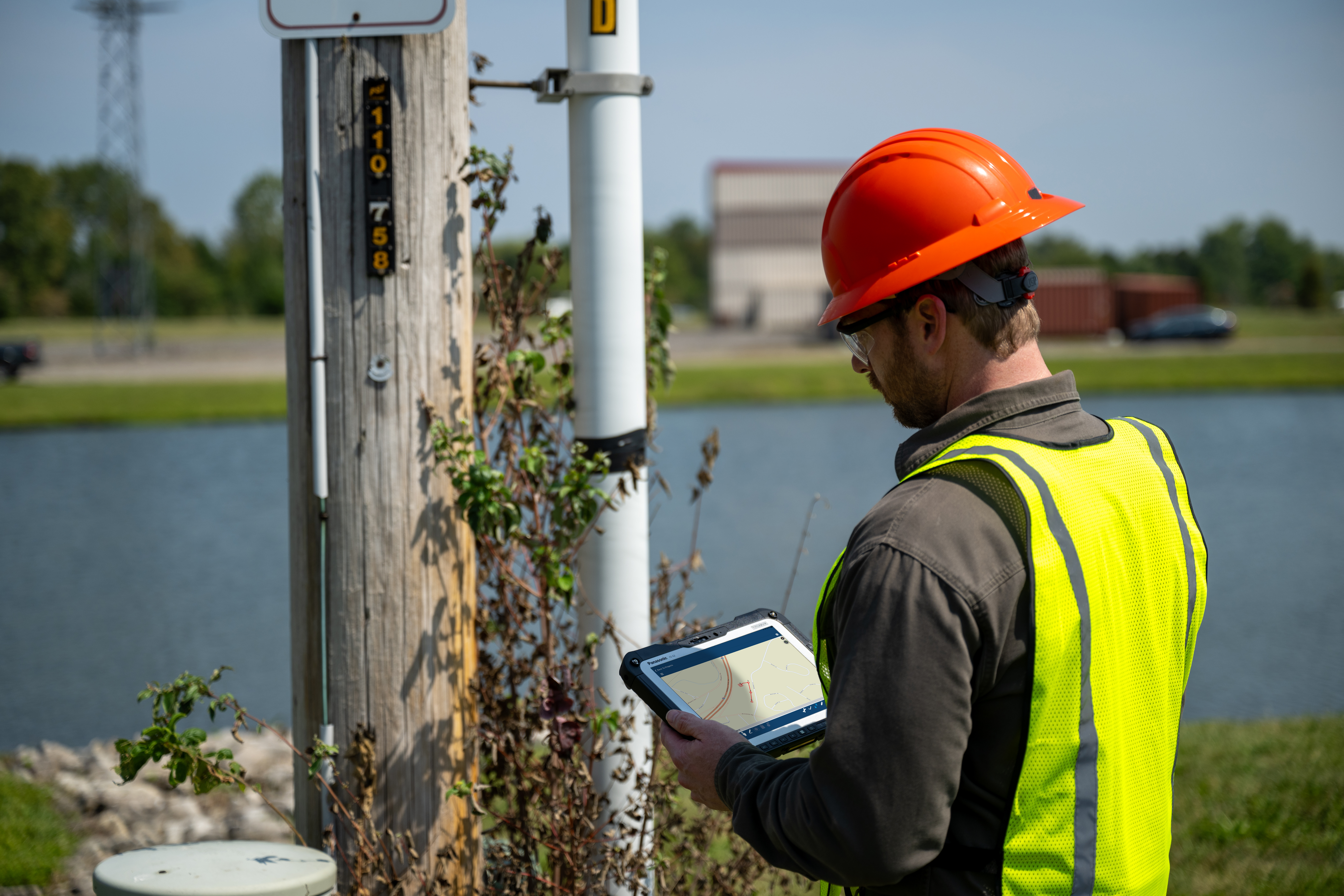Tough jobsite conditions are nothing new for utility field personnel. They face extreme weather, long hours, and unpredictable challenges. This daily reality requires rugged laptops and tablets that perform without fail, no matter the conditions.
When these teams rely on consumer-grade devices that aren’t built for rugged field environments, the result is lost productivity, high operational costs, and frustrated employees. Instead of driving efficiency, which is what rugged tablets and laptops do, the wrong devices become points of failure that slow teams down.
According to a recent survey of over 155 utility leaders led by Panasonic Connect and Utility Dive’s studioID, the gaps between device performance and field realities are clear.
How Device Limitations Undercut Utility Field Operations Teams
Most surveyed utility executives admitted that their teams experience challenges with field devices. Downtime happens too often. If employees have to plan their work based on how devices will respond and perform, this creates limitations that disrupt utility operations.
Here are some signs that your devices are holding you back.
Poor Connectivity Delays Repair
When a new technician is facing a complex repair they’ve never done before, poor device connectivity in the field can prevent them from connecting to an experienced remote technician to troubleshoot the issue in real time.
When this happens, the job takes longer, mistakes can happen, and customers are left waiting. If the repair can’t be completed the first time, another tech may need to finish the job, causing more delays and higher costs.
Weather Conditions Limit Field Service Access
When the sun beats down on field personnel as they inspect lines, or the rain falls steadily as technicians complete work orders, non-rugged devices only get in the way.
Instead of supporting work in real time, workers have to keep devices in vehicles or under makeshift covers, making them difficult to access and use on the spot. When they need to enter job notes or check schematics, they have to stop what they’re doing and go back to use their device.
Device Failures Disrupt Critical Utility Work
When consumer-grade devices are pushed to their limits, they fail prematurely. More than one-quarter of survey respondents get two years or less from their current devices before they have to replace them.
What causes early failure? The most common culprits are:
- Drops, shocks, or other impacts (72%)
- Weather (54%)
- Dust, dirt, or sand (39%)
In these situations, technicians have to find makeshift ways to capture and access information, which often means returning to pen, paper, and phone. This creates more work for office staff who have to re-enter the notes. It also opens the door to mistakes as information is duplicated, misread, or lost in translation.
Dead Batteries Stop Utility Field Service Workers Short
Devices that aren’t built for the field don’t have batteries that last. Consumer-grade tablets and laptops run the risk of giving out in the middle of capturing inspection notes or completing a repair order. This leaves workers scrambling to find other ways to work.
For 49% of surveyed executives, device battery life is an ongoing issue. Because batteries can’t last through a day of field deployment or support hot-swap capabilities, workers face avoidable downtime and delays that cause jobs to take longer than they should.
Maximize Your Utility Field Service Efficiency With Rugged Devices
The costs of downtime, delays, and rework that stem from using non-rugged devices add up quickly and outweigh the difference in the upfront price between consumer-grade devices and rugged, purpose-built ones.
A smart investment in field tablets and rugged laptops can mitigate the recurring issues that utility executives struggle with. By equipping your crew with the right tools, you can position them to work efficiently, stay connected, and deliver reliable service every day.
For more insights on technology for utility field work, check out the full report.

